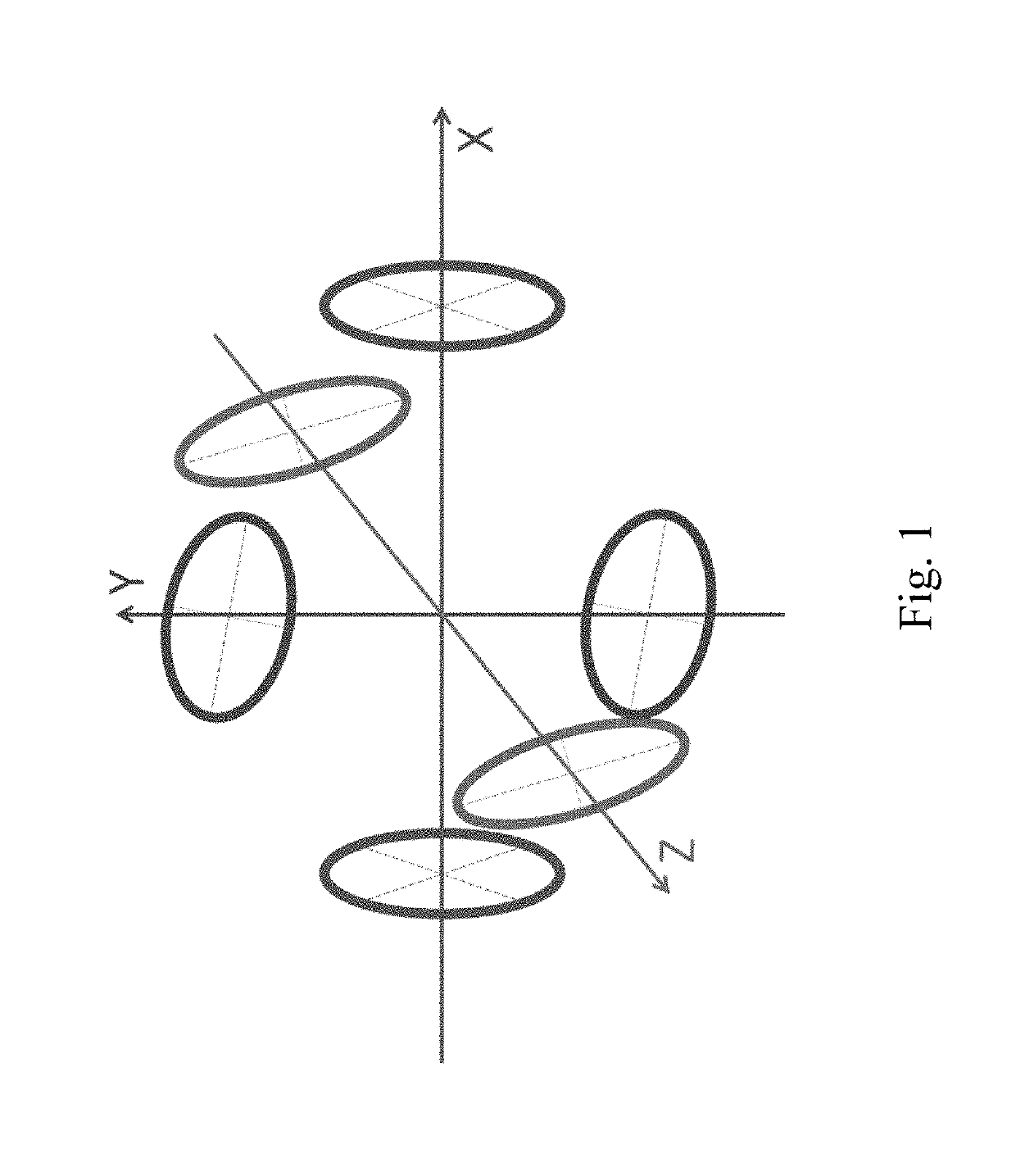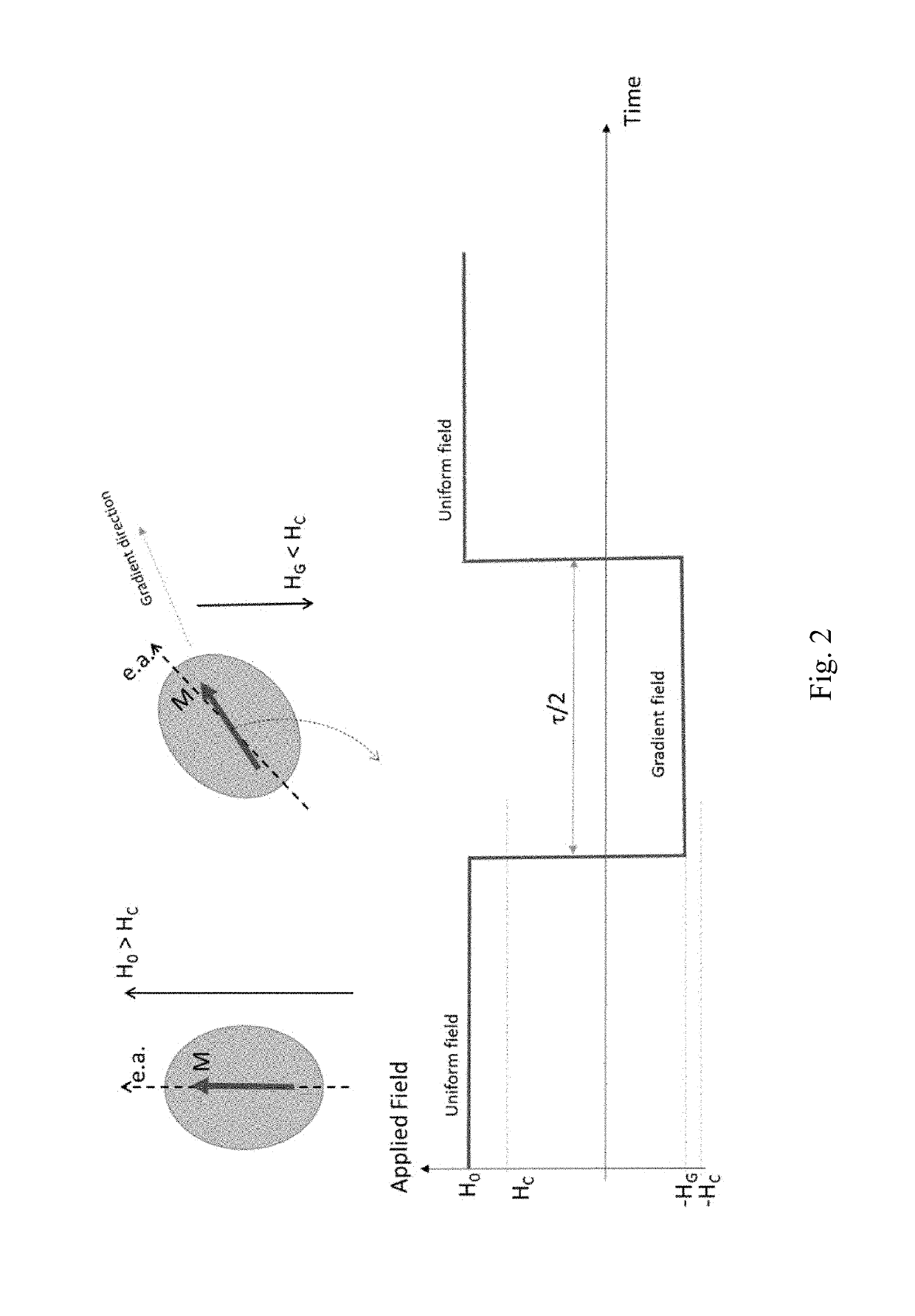3D navigation of nanoparticles via induction of metastable diamagnetic response
a diamagnetic response and nanoparticle technology, applied in the field of 3d navigation of nanoparticles via induction of metastable diamagnetic response, can solve the problems of severe spatial and temporal resolution limitations of the approach, and the difficulty of using this approach to navigate magnetic nanoparticles to any point deep in the brain even with a 1-mm spatial resolution
- Summary
- Abstract
- Description
- Claims
- Application Information
AI Technical Summary
Benefits of technology
Problems solved by technology
Method used
Image
Examples
example 1
[0030]The herein described methods can be used to navigate magnetic nanoparticles to any point in the brain. The trajectory can be divided into two major domains including (i) brain tissue regions with no flow and (ii) flow regions through the cerebrospinal fluid (CSF) in the brain or blood vasculature outside the brain, respectively. When moving through the CSF or blood currents, in addition to the magnetic force, the nanoparticles experience a force due to the flow dynamic, as illustrated in FIG. 4. When moving through the sponge-like tissue domain, the nanoparticles move with an effective drag coefficient, which in turn strongly depends on the ratio of the average nanoparticle size to the average pore size of the tissue.
[0031]Illustrations in FIGS. 5(a)-(c) show Comsol simulation results of trajectories of 30-nm magnetic nanoparticles that were moved from point A to point B separated by 1 cm in the brain via application of specially timed magnetic field gradients. The magnetic fi...
PUM
 Login to View More
Login to View More Abstract
Description
Claims
Application Information
 Login to View More
Login to View More - R&D
- Intellectual Property
- Life Sciences
- Materials
- Tech Scout
- Unparalleled Data Quality
- Higher Quality Content
- 60% Fewer Hallucinations
Browse by: Latest US Patents, China's latest patents, Technical Efficacy Thesaurus, Application Domain, Technology Topic, Popular Technical Reports.
© 2025 PatSnap. All rights reserved.Legal|Privacy policy|Modern Slavery Act Transparency Statement|Sitemap|About US| Contact US: help@patsnap.com



